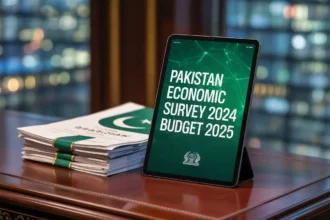Pakistan achieved a notable milestone in 2024 when approximately 8 million women were empowered with mobile internet access, bridging the country’s gender gap from 38% in 2023 to 25% in 2024, per the Mobile Gender Gap Report 2025.
This marks the first significant progress since 2021 with a 13 percentage-point drop, demonstrating the national strategies’ impact on women’s access to digital resources.
Unprecedented Growth Led by Rural Women
The report indicates that Pakistani women’s mobile internet usage leaped from 33% to 45% in 2024, a remarkable 12-point increase—the highest among all countries studied by GSMA. This surge is primarily attributed to rural women who have faced extreme challenges in accessing digital services.
The increase results from focused digital inclusion campaigns, outreach programs, and public-private initiatives targeted at previously neglected areas. Several of these initiatives, like the Digital Pakistan Policy and the government-sponsored training programs for women, were pivotal to this change.
Experts point out that these approaches went beyond providing smartphones and connectivity by addressing critical issues of digital literacy and cost, two significant obstacles for women in rural Pakistan.
“That’s a huge achievement for Pakistan’s digital economy,” a Ministry of IT and Telecom official noted.
Providing women access to the internet is the first step in harnessing their full economic value.
Announcement of Digital Growth
Additionally, GSMA reports that Pakistan added 13 million new mobile internet users in 2024, including 8 million women and 5 million men.
This phenomenon represents digital growth and also exemplifies the successful implementation of the national digital inclusion strategy.
This decline in the gap characteristic comes as the country seeks to expand foreign investment in its technology industry. Wider internet access also poses great opportunities for growth in e-commerce, mobile banking, and even education through advanced technology.
Strongly enhances the prospects for growth in e-commerce, mobile banking, and even education through advanced technology.
While advising Pakistan on resolving critical socioeconomic issues, experts believe solutions to removing the digital gap for women will significantly alleviate poverty, improve women’s rights, and boost the GDP.
The Bullish Prediction
Increased remote work opportunities boost global participation in an emerging Pakistani workforce, tackling the unemployment gap.
Enabling the newly joined citizens with the right tools to access advanced technology could increase entrepreneurial opportunities.
Despite the encouraging metrics, GSMA scholars warn that the remaining 25% gender gap poses a significant risk. Real change will come from further investment and inclusive policy strategies.
Yet, 2024 signifies a milestone, demonstrating that digital obstacles can be surpassed with the appropriate strategy; hence, millions of women can be integrated into the online world to participate fully in the digital economy.









